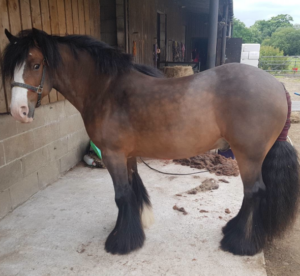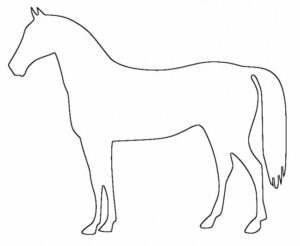Clip Functions & Price List
The information below is a base guideline , all clips can be personalised to suit the needs of each individual horse and their owners.
PRICES ARE WITH LEGS LEFT ON UNLESS OTHERWISE STATED
Melody is based in the North West of England and covers an area in Lancashire/Greater Manchester/Parts of Cheshire.. She helps horse owners go from feeling overwhelmed & daunted when it comes to clipping day, to confident and relaxed about the process, whilst giving your horse the very best clipping experience
To book in or enquire, please WhatsApp 07427 735 835 with a photo of your horse and your farm postcode. Below you will find a guide on prices and clips. If you don’t see what you want, please just ask, Melody is happy to discuss your options and advise using her extensive knowledge and experience.
When you choose Melody for your horse, you are choosing the very best , safe, happy and positive experience for him/her when it comes to clipping, as she tailors her service to meet the specific needs of each individual horse. so call Melody if you want the best!
Melody is happy to to travel however some areas may require a minimum fee / travel fee to cover the costs adequately. This will be made clear at the time of booking. For smaller ponies under 12hh please take £5 off the displayed price

The Bib Clip
A clip that is not the most common, but it still has its place – the bib clip.
Useful for horses that need the bare minimum off, it is useful clip for horses who are turned out over winter but are struggling with an itchy chest.
It is also a great choice for the most nervous of horses who require the a simple build up clip in preparation for their next clip, a great clip for confidence building the young or nervous horse.
The Irish Clip
One of my firm favourites, the Irish clip, which removes the key areas, when it comes to sweating through work. The chest, shoulders, girth are all removed, and there is the option of removing the full neck fur , straight down from the wither to stifle, removing most of the saddle flap area, OR we can leave on the top neck muscle and bring the Irish clip low, still keeping some cover on the ribs, particularly useful for a horse that can get cold quickly, or one who lacks condition or top- line. Keeping the neck partially on can aid a horse to keep warmer.
Face can be left on, half clipped, or fully clipped.
The Trace Clip
The Trace Clip is similar in ways to the Irish clip however it has a key difference. The Trace clip follows the line of the harness ‘traces’ and this is how it became known as the trace clip, when working horses were required to pull carts. Traces are the part of the harness that connect the collar to the cart, they are usually leather and attached with a short link of chain.
The Trace clip removes the top of the hind leg , which is different to the Irish clip (above) which leaves the hind keg covered.
Face can be left on, half clipped, or fully clipped.
The Blanket Clip
The Blanket Clip is excellent for removing all the key belly areas, which makes it much easier for cleaning up the bellies of horses turned out in winter fields. A quick flick of the brush removes most of the mud. and if he is wearing a rug over his blanket clip , more often than not the blanket it kept clean and dry.
Face can be left on, half clipped, or fully clipped.
The Full Clip
The full clip comes in either, Legs on so full body off, legs left on or full body off legs also off. Some people opt to keep half the face covered also, and others opt to remove the full face. Each case is unique and if you want to discuss what is best for your horse I am happy to do this. Where possible, especially with other horses, I am keen to leave the half face (front ) on and blend – (No chunky steps down the side of the face ). This is because I much prefer leaving on protection vs exposing a horses’ sensitive face. Often half clipping the head is enough to remove sweating that comes with winter riding. I will however fully clip the face if it is necessary, some draft blooded horses can really throw up a thick coat and become very itchy, so it all depends on the horse.
*When it comes to leg clipping, there are not many spaces left for new clients who require leg clipping for their horses. It may or may not be possible so please discuss in advance with Melody.
The Hunter Clip
Similar to the full body clip, except we leave on a saddle or oval patch to offer protection to the horse where the saddle and weight of the rider can cause friction. Some horses need this more than others and Melody will be able to advise accoridnly upon meeting your horse and assessing their back area.
Leg hair is left on to offer protection from scrapes from hedges , thorns and general abrasions.
CoverCoat Clipping
The CoverCoat clip has gained this name due to Lister naming the blade that leaves a longer coat on, a ‘Covercoat’ blade. This leaves a slightly longer coat on which is useful for a variety of reasons, sometimes its to retain colour for example on a palomino, or some horses become rubbed by tack in places with a normal medium cut so using a slightly longer blade can help to offer more protection. Cutting with a longer blade can also be useful for horses in the showing circuit who need an ‘unclipped’ look- to gain the edge over their competitors and look the best that they can be. Often these clips grow out quickly and a re-clip is to be expected.
Melody can also achieve this clip using different blades that attach to a smaller clipper for the more sensitive horses.
Blended Traditional/Mountain & Moorland Clipping
Blended clipping is something Melody began doing in 2014 when she was practicing different techniques and realised how much better it looked to blend the coat at the hock and knee, vs the solid ‘step line’ at the top of the leg, when it came to turning out a horse for showing purposes. Blended clipping entails clipping that appears flawless with no obvious change in gradient, it is often applied at the hock and knees, the mane line and the top of the tail.
This also works really well for heavy coated draught blooded horses in the UK who tend to get very thick hair at the tops of their legs, this proves troublesome for getting wet in the fields during winter turnout and holding a lot of mud, or attracting bedding and poop when lay down during the night.
Whether its for show purposes, or stable management, Sometimes, its just easier and nicer when its clipped of.
Cushing’s Clips
Cushings clipping requires the knowlege and the clipping power to remove often relentless, unforgiving coats! It is something that Melody has vast experience in and something that is close to her heart. She treats each horse or pony with cushings with the love and care they deserve, making them much more comfortable and often taking ‘years’ off their apperance.
‘Misty’ was Melody’s childhood pony , (the grey pony seen here) & he had cushings disease, he is the reason she started clipping and where it all began in the mid 90’s.
Design Your Own Clip
If you have something specific in mind and you are feeling creative, please feel free to design your own clip and I am happy to bring this to life for you!
Creative Clipping Prices
Creative clipping is an exciting part of horse clipping that Melody enjoys doing for people. Often clients have a vision and its Melody’s job to bring that to life! Please ask in advance of clipping day, if creative clipping is something that you would like on your horse.
Confidence Building Sessions – 60 mins
Melody offers confidence building sessions between clipping seasons for nervous or young horses. These are really useful over the summer months to prepare your horse or rehabilitate your horse for clipping – Melody can give you an action plan on the best course of action for your horse prior to clipping season and is often able to rehabilitate problem horses to the point where sedation is no longer needed.
Each session is between 45 -60 minutes and is completely focused on building your horses confidence through an assessment followed by action steps to work with. A small price to pay, for the long term happiness of your horse when it comes to clipping. Many people also pick up on much more than just clipping information, they learn about other aspects of their horse by Melody’s wisdom and knowledge, that she will share with you on the day.

Face Clipping Pros & Cons
Where possible, especially with other horses, it is good practice to leave the half face (front ) on and blend down the side where the bridle line is – (No chunky steps down the side of the face ). This is because I much prefer leaving on protection vs exposing a horses’ sensitive face.
Often , half clipping the head is enough to remove sweating that comes with winter riding. I will however fully clip the face if it is necessary, some draft blooded horses can really throw up a thick coat and become very itchy, so it all depends on the horse and owners requirement.


















